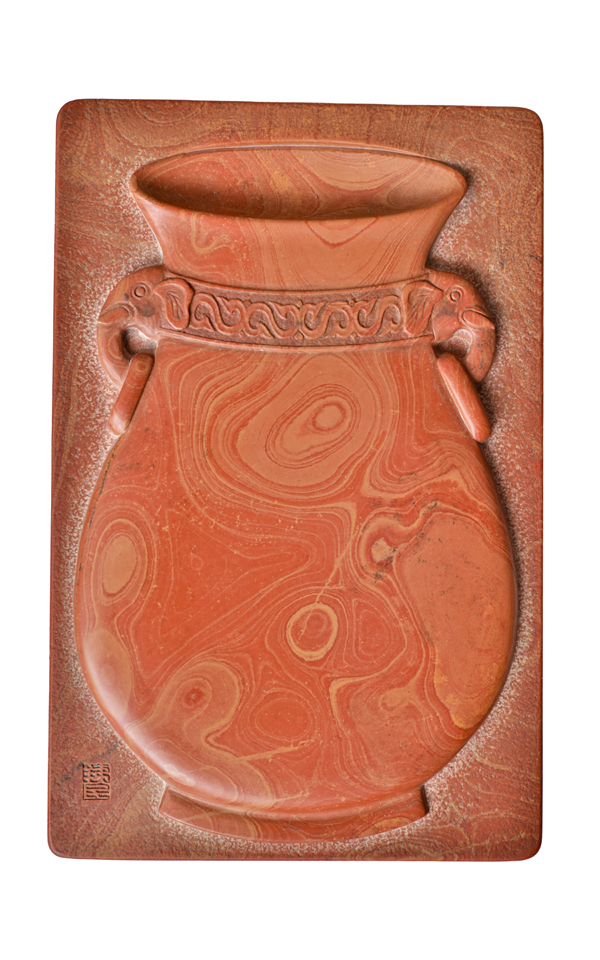Red silk inkstone craft flourishes in Shandong province
Red silk stone is a kind of microcrystalline carbonate rock with curled red silk thread-like laminations – commonly used for carving stone handicrafts, such as ink slabs and brush pots – and the technique behind it is flourishing in East China's Shandong province.
Inkstone is one of the Four Treasures of the Study, which refer to the essential tools used in Chinese calligraphy and painting.
Red silk inkstone is a Chinese traditional stationery that originated from Linqu county in Weifang city, located in Shandong province.
It acquired its name due to the use of red silk stone that features red and yellow hues. It was considered the most prominent among the Four Famous Inkstones during the Tang (618-907) and Song (960-1279) dynasties.

A red silk inkstone with a bottle pattern symbolizes peace and prosperity. [Photo by Wang Ying for chinadaily.com.cn]
The process of creating a red silk inkstone requires six steps: selecting the stone, designing, making, polishing and waxing it, which embodies the wisdom of Chinese artisans.
When choosing a stone, it's important to note that the high-quality ones will create a crystal-clear effect when a drop of water is placed on them, resembling raindrops on lotus leaves. The water does not spread out or absorb into the stones.
Linqu county has made concerted efforts to preserve and promote the craft of red silk inkstones over the past few years.
This has seen the county proactively take part in various exhibitions and events related to this intangible cultural heritage – including the 2018 Second Intangible Cultural Heritage Development Cooperation Forum, the Grand Exhibition of National Intangible Cultural Heritage Artifacts and the Inkstone Carving Skills Competition in Shandong Province.
As a result, this traditional craft has gained renewed attention and appreciation across the nation, injecting new momentum into Linqu county's own cultural development. (Edited by Zhou Yunlai)








